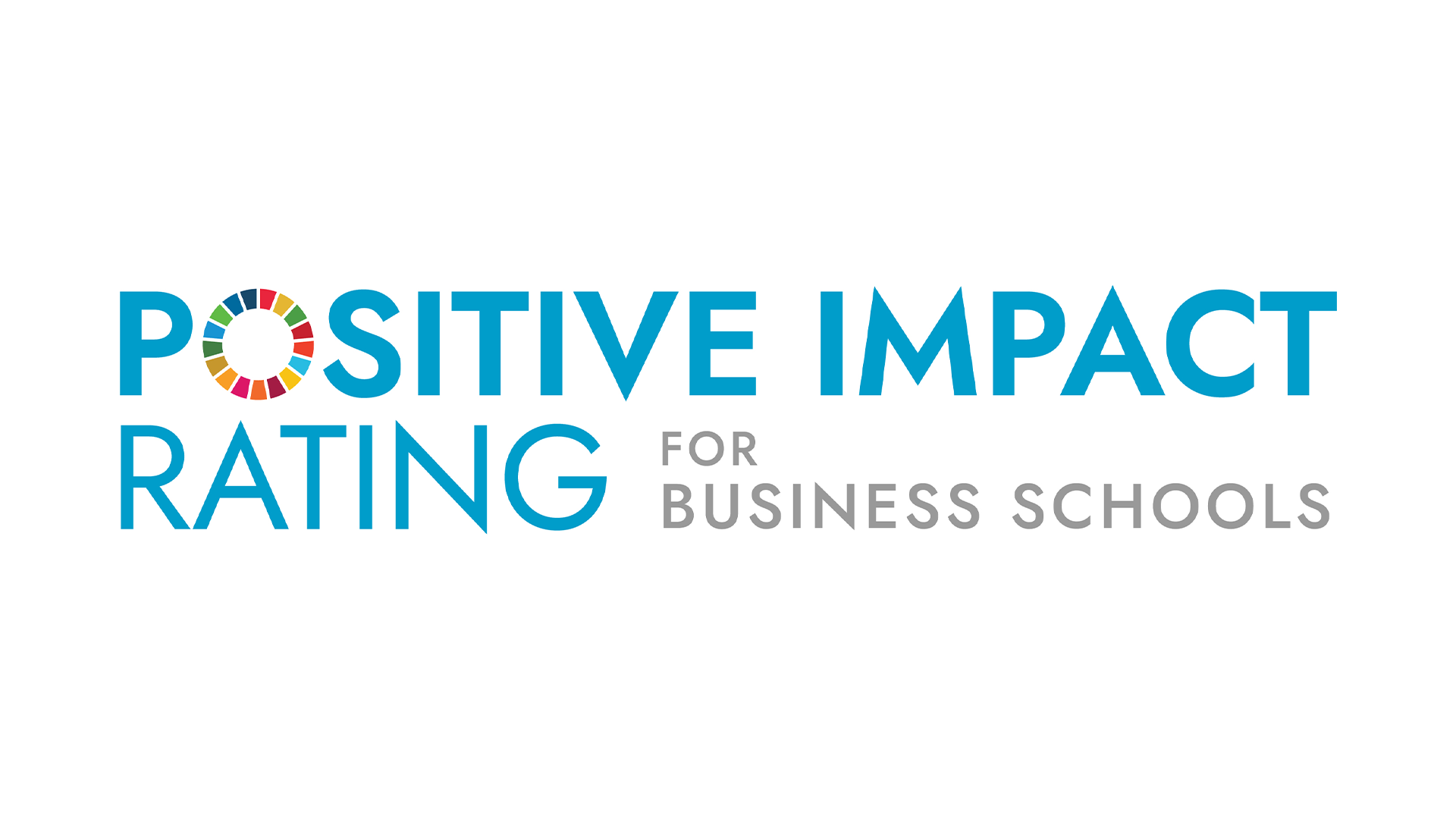
UN PRME Global Forum, virtually from New York, USA, June 17, 2021
The Positive Impact Rating 2021 Report was launched today at the UN PRME Global Forum. The social impact levels of 46 business schools from 21 countries were announced by Prof Thomas Dyllick of the Positive Impact Rating Association and Sophie Charrois, President of oikos International.
Overview and summary
The Positive Impact Rating (PIR) is a rating conducted by students and for students. For the second time, students worldwide assessed their business schools on how they perceive their positive impact in the world. The positive impact of business schools goes beyond their contribution to business and the economy; it addresses the need for their positive impact for society.
“Business can be a force for good, and this is strengthened by students who are the next generation of business leaders. The PIR supports business schools to prioritize responsible management education – UN Global Compact and PRME principles strongly support these ambitions.”
Antonio Hautle, Executive Director, UN Global Compact Switzerland
The Indian trio of the S P Jain Institute of Management and Research (JPJIMR), XLRI – Xavier School of Management and Goa Institute of Management (GIM), and the University of Business and Technology Kosovo all achieved the highest level of the PIR as “Pioneering Schools”. They did this thanks to innovative community-based actions, environmental and socially responsible culture and governance, and a strong teaching focus on responsible leadership.
The data collection is organized by student associations, which distributed surveys across campuses. The PIR gives the students a platform to assess the positive impact of their own schools, providing a unique opportunity for their voice to be heard.
Professor Dyllick said: “Business school rankings are often out of touch and distanced from sustainability issues. The PIR shows how student perspectives can shift the thinking of schools.”
The PIR is the first rating in which students worldwide assess their business schools on their positive impact. Sophie Charrois, President of oikos International and PIR Supervisory Board member, said at the launch event: “More and more students all over the world seek an education that prepares them as change agents and leaders of tomorrow. oikos International is proud to have been part of the PIR from the beginning to provide them with a global assessment of schools that focus on these competencies”.
The PIR was created by concerned business school experts together with global NGOs – WWF, Oxfam, and UN Global Compact. International student associations oikos, AIESEC and Net Impact are partnering with PIR, which is also supported by VIVA Idea (Costa Rica), Mission Possible Foundation & Fehr Advice, both from Switzerland.
The larger role of business schools
Business schools are traditionally seen to serve students by developing their management competencies and to serve business organizations by providing them with educated talent, insights from research, and continuous education for their staff. Business schools thereby support business and the economy. Providing a positive impact on society has not been considered core to business schools. Still, demands for it have steadily increased in the past decade, as exemplified by the UN Sustainable Development Goals and new demands from international accreditation standards. This new business school rating responds to these demands.
The ambition of this rating is to be a lever of change in the much-needed deep transformation of business schools. Rankings have become increasingly important, and this rating builds on this phenomenon by offering a new and hopefully better way to assess business schools in the 21st century.
What students want!
Students provided an incredible wealth of constructive comments on how their schools can increase their positive impact. Students are very clear in what they want their schools to STOP doing: 1. Teaching outdated theories and models of economics and business; 2. Using single-use plastics on campus; 3. Employing staff with no knowledge, experience, or passion in sustainability; 4. Unsustainable food and catering services on campus; 5. Practices that continue to create waste; 6. Offering degrees without mandatory sustainability courses.
There is also a consensus on what they want their schools to START doing: 1. Putting sustainability at the core of teaching on economics and business; 2. Providing practical sustainability competencies; 3. Engaging with NPOs for courses, projects, and career options; 4. Creating social impact initiatives with local and global communities; 5. Empowering and supporting students to act for sustainability; 6. Educating all b-school staff in sustainability topics.
Measuring the social impact of business schools
The rating survey asks students 20 questions in seven relevant impact dimensions: governance and culture of the school; study programs, learning methods, and student support; the institution as a role model and its public engagement. The overall PIR score of the business school is used to position the schools across five levels. The different levels refer to the developmental stage of the business school, rating it by a certain level of achievement. Business schools are provided with a defined social impact model and a tool that they can use for measuring their impact.
A tool for collaborative learning and action
The purpose of the positive impact rating is to enable learning at and across schools rather than creating a competitive ranking. A rating offers the safety of groups rather than individual ranks and intends to foster collaboration. Schools, therefore, are positioned in five different levels, where they are featured alphabetically. Students and the management of each participating school receive free online access to a dashboard featuring their school’s results across the different areas compared to the average of all schools. This allows them to actively work towards increasing their positive impact. Students, who have access to the same data, are empowered to collaborate with the school administration.
How the participating schools performed
In this second edition, students from 47 schools located in four continents and 21 countries participated in the survey. While the number of participating schools and countries remained comparable to the first edition, the number of student participants more than tripled. More than 9000 students responded to the survey.
The PIR 2021 edition features 46 schools. For the first time, there are business schools that have reached the top Level 5 (pioneering schools). At level 4 (transforming schools) the report features 24 schools. At Level 3 (progressing schools) there are 18 schools. In the spirit of reinforcing good practice, the rating does not feature schools that were rated below level 3.

PIR as an enabler for business school development
This business school rating seeks to serve as a tool for continually improving the business school. It reflects the positive impact of the school as seen and evaluated by their own students. This is done every year anew, with successive generations of students evaluating and reevaluating their schools. Learning and development are enabled through the design of the PIR. By providing the assessment tool to the student organizations and school management, both are empowered to use the data in many productive ways. In addition, the PIR organization collects and communicates best practices from the best performing business schools in the rating.
A tool for social impact measurement
The PIR has a dual purpose. It is a comparative rating, but it also serves as a tool for social impact measurement and reporting. The design of the PIR offers all participating schools a private link to their school dashboard where the survey results are available in full detail. The PIR dashboard represents a solid basis for school management and engaged student organizations alike to define actions and strategies to increase the positive impact of their schools. Some schools have started to use the PIR as a measurement and reporting tool for reporting on their progress and social impact towards PRME (SIP Report), EQUIS (Self-Assessment Report), or AACSB (Self-Evaluation Report). Other schools have started to use it as a management tool for improving their social impact.



Visit the Positive Impact Rating Website for more information.



